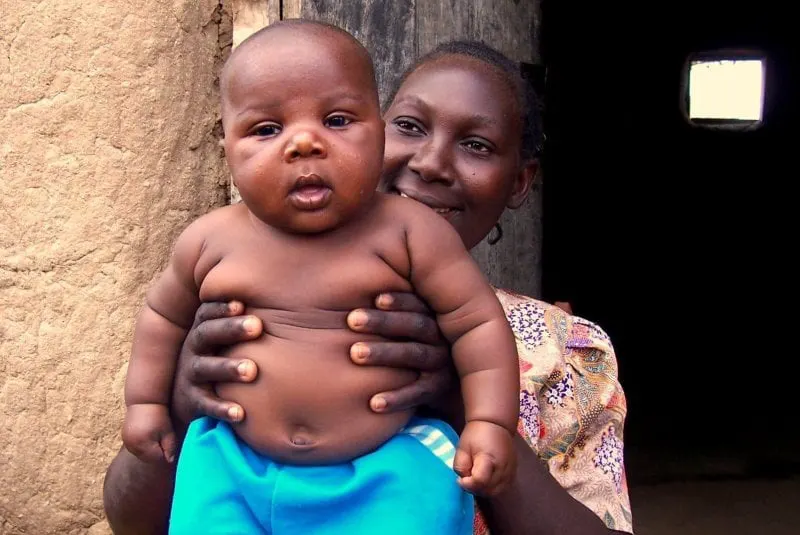Once battling starvation, some developing countries now face rising obesity rates. What’s causing it?
Once battling starvation, some developing countries now face rising obesity rates. What’s causing it?


Obese people have shorter life expectancy and risk factors like Type 2 diabetes and heart disease and the easiest indicator for obesity is weight gain.
Is that increase in childhood weight due to less exercise? It’s not a bad deduction, since all weight gain occurs because more calories are consumed than burned, but a new paper finds that it is instead increased calories, including in more rural areas that are less wealthy but more active than rural kids.
In 1975, obesity was not a worldwide issue because some elites instead believed there was a Malthusian population bomb looming and that mass starvation and forced sterilization were not only coming soon but needed. The Obama Administration’s “Science Czar”, John Holdren, Ph.D, even co-authored a book with famed doomsday prophet Paul Ehrlich, Ph.D, outlining their concerns. Science ignored the nihilism and now feeds the world for less money using less energy, water, and land per calorie than at any time in history. That keeps food costs low, which overwhelmingly benefits the poor, who can then use that excess money to live better lives. Yet people with choices will often choose pleasure, including buying a hamburger instead of overpriced quinoa.

The paper finds that consuming more calories makes the difference rather than having less exercise. The world of science already knew that, of course, but food activists who want to sue food companies and their allies in academia have instead argued that specific foods make people fat; high-fructose corn syrup but not honey, for example, even though the fructose content is the same. Trans fats in donuts but not the donuts themselves. You get the idea.
While bad correlation gets a lot of traction in places that believe in non-denominational mysticism, like the New York Times, it makes no more sense than the astrology and acupuncture the Times also covers way too much. People lose weight 100 percent of the time if they cut calories. That guy who did that movie where he ate McDonald’s every day left out of his shockumentary that he was eating 250 percent of the calories he should have been eating. The same experiment by a skeptical nutrition expert ate the normal number of calories and had no ill effects despite a diet of 100 percent “junk” food.
The authors are actually more in the ‘some food is worse for you’ camp even though a critical look at their own evidence doesn’t show it. No observational paper can do that, it is why they are in the exploratory camp rather than ‘X leads to Y’ that chemistry, biology, and toxicology do.
Though this is a cross-sectional analysis – asking a group of people one time about their behavior and looking at their health – they still make the leap from ‘more calories without more activity’ to blaming weight gain on the fact that city kids have more access to purchased food, and even claim that their immune activity is different so therefore it must be causal. That is completely speculative. Health experts should be alarmed because that is the same argument the anti-vaccine space use when they are throwing measles parties for kids; more nature fixes everything.
The speculation aside, the data are good, especially because they are not western kids, they include indigenous Amazonian children. And the data show that eating too much is the problem – but it is a better problem than developing countries used to have, when the boom and bust of famine cycles led to mass starvation and deaths.
Hank Campbell is the founder of Science 2.0 and co-author of the book Science Left Behind. Follow him on Twitter @HankCampbell
A version of this article was originally posted at Science 2.0 and has been reposted here with permission. Science 2.0 can be found on Twitter @science2_0

 | Videos | More... |

Video: Nuclear energy will destroy us? Global warming is an existential threat? Chemicals are massacring bees? Donate to the Green Industrial Complex!
 | Bees & Pollinators | More... |

GLP podcast: Science journalism is a mess. Here’s how to fix it

Mosquito massacre: Can we safely tackle malaria with a CRISPR gene drive?

Are we facing an ‘Insect Apocalypse’ caused by ‘intensive, industrial’ farming and agricultural chemicals? The media say yes; Science says ‘no’
 | Infographics | More... |

Infographic: Global regulatory and health research agencies on whether glyphosate causes cancer
 | GMO FAQs | More... |

Why is there controversy over GMO foods but not GMO drugs?

How are GMOs labeled around the world?

How does genetic engineering differ from conventional breeding?
 | GLP Profiles | More... |

Alex Jones: Right-wing conspiracy theorist stokes fear of GMOs, pesticides to sell ‘health supplements’




 Trust issues: What happens when therapists use ChatGPT?
Trust issues: What happens when therapists use ChatGPT? Fighting deforestation with CO2: Biotechnology breakthrough creates sustainable palm oil alternative for cosmetics
Fighting deforestation with CO2: Biotechnology breakthrough creates sustainable palm oil alternative for cosmetics California, Washington, Oregon forge immunization alliance to safeguard vaccine access against federal undermining
California, Washington, Oregon forge immunization alliance to safeguard vaccine access against federal undermining Viewpoint — Fact checking MAHA mythmakers: How wellness influencers and RFK, Jr. undermine American science and health
Viewpoint — Fact checking MAHA mythmakers: How wellness influencers and RFK, Jr. undermine American science and health 30-year-old tomato line shows genetic resistance to devastating virus
30-year-old tomato line shows genetic resistance to devastating virus Viewpoint: Video — Big Solar is gobbling up productive agricultural land and hurting farmers yet providing little energy or sustainabilty gains
Viewpoint: Video — Big Solar is gobbling up productive agricultural land and hurting farmers yet providing little energy or sustainabilty gains The free-range chicken dilemma: Better for birds, but with substantial costs
The free-range chicken dilemma: Better for birds, but with substantial costs ‘You have to treat the brain first’: Rethinking chronic pain with Sanjay Gupta
‘You have to treat the brain first’: Rethinking chronic pain with Sanjay Gupta
